Forests are known as the “lungs” of the planet. The fact that trees take carbon dioxide from the atmosphere for photosynthesis and release oxygen makes them one of the most important things to make life on this planet possible.
Not to mention a crucial component of human survival. In addition to producing oxygen, woods worldwide are essential for maintaining the planet’s environment. They reduce climate change, promote the growth of plants and animals, and serve as enduring reminders of the planet’s inherent beauty.
11 Largest Forests in the World
The UN report “The State of the World’s Forests in 2020” says that forests cover 31% of the world’s land area. The report also shows that even though there are 4.06 billion hectares of forests in total, they are not spread out in the same way all over the world. As people’s cities have grown in the last few years, many square miles of forest have been cut down. The degradation of forests is happening at an alarming rate, making the loss of biodiversity and climate change even worse.
Our modern world has lost many truly wild places due to modernization, here are 11 of the largest forests in the world. It’s time to learn more!
1. Amazon Rainforest, South America
The Amazon Rainforest, also known as Amazonia, is the largest tropical forest in the world. It covers 6.9 million square miles and is located in nine South American countries. The Amazon area is the world’s largest river basin, making it a uniquely diverse ecosystem that might hold secrets for healing diseases and discovering new species.
The Amazon River basin is home to hundreds of thousands of plant and animal species. Some of them are still awaiting discovery! This forest is rich in biodiversity because of its location: it lies at the equator, where rainfall amounts are high, and temperatures change little throughout the year.
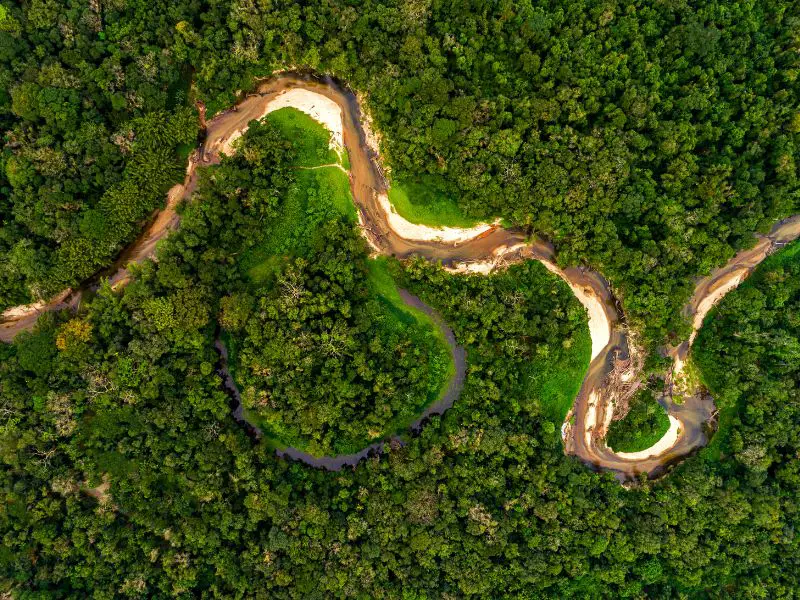
Did you know? An unexpected relationship exists between the Sahara Desert in Africa and the Amazon Rainforest in South America. Strong winds pick up dust in the Sahara, carry it over the Atlantic Ocean, and dump it in the Amazon rainforest. The native flora receives vital nutrients from these dust deposits, which contributes to the healthy growth of the jungle.
2. The Congo forest, Africa
The Congo Basin is home to the world’s second-largest tropical rainforest. Tens of millions of indigenous and non-indigenous people rely on this environment for their source of food, fresh water, shelter, and medicine. At the same time, this ecosystem is home to several species of animals on the verge of extinction.
Did you know? The woods of the Congo Basin are home to Africa’s highest number of different kinds of animals, including mammals, primates, birds, amphibians, fish, and swallowtail butterflies. There are over a thousand different kinds of birds that may be found here.
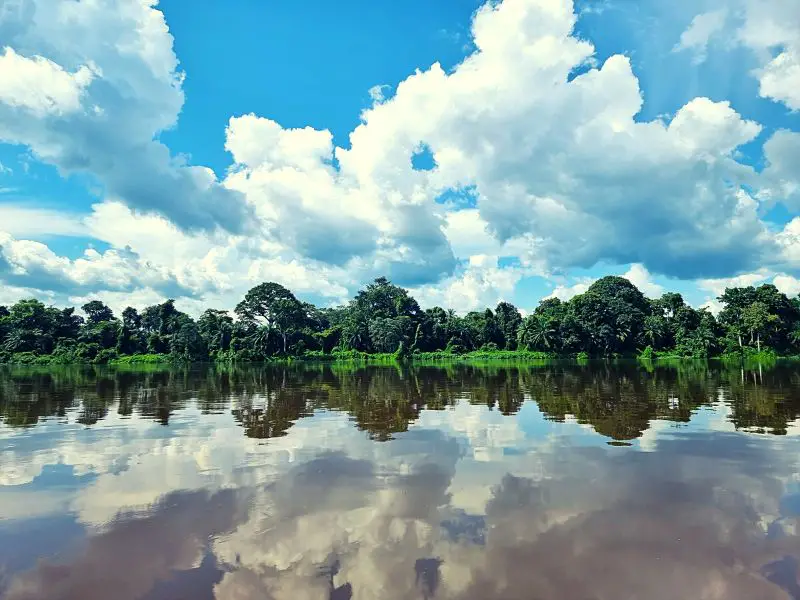
3. New Guinea Rainforest, Papua New Guinea
According to the WWF, the third-largest rainforest in the world lies on the island of New Guinea, which is divided into two territories: the eastern half is part of Papua New Guinea. In contrast, the western half is part of Indonesia. This island is around 303,000 square miles (786,000 square kilometers) in size and housing nearly 5% of the world’s plant and animal species, such as tree kangaroos and crowned pigeons.
Did you know? Papua New Guinea is home to the hooded pitohui, one of only the planet’s deadly birds in the world. Its feathers contain one of the most toxic compounds known to science.
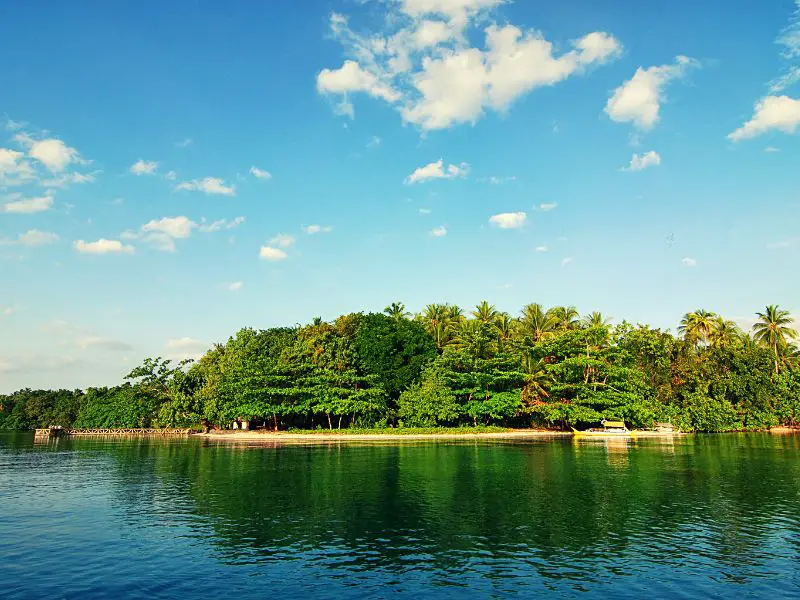
4. Valdivian Temperate Rainforest, South America
The Valdivian temperate rainforest, which covers an area of approximately 248,100 km2, is located between Chile and Argentina on the west coast of southern South America. The forest is highlighted by angiosperm trees, bamboo, ferns, conifer trees, ice sheets, glaciers, and a central valley. Because of the constant rain, the temperature here is generally humid and typically cloudy.
There are four different kinds of forest ecosystems in the Valdivian Temperate Rainforest. These are the deciduous forests, the laurel-leaf forests, the Patagonian Andean forests, and the Northern Patagonian forests.
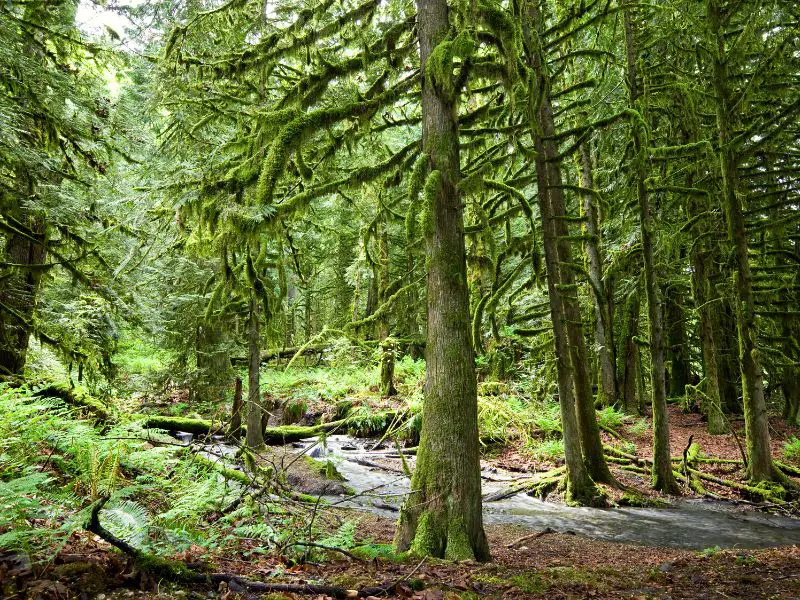
5. Daintree Rainforest, Australia
The Daintree tropical rainforest, named for Richard Daintree, is located on the northeast coast of Queensland, Australia. It spans around 2,600 km2. The forest covers the entire region between Bloomfield River and Mossman Gorge, as well as the Daintree National Park.
Some of the oldest plants on Earth, such as Lycopsida and Psilotopsida, may be found in the forest. It has the most significant number of scarce animal and plant species.
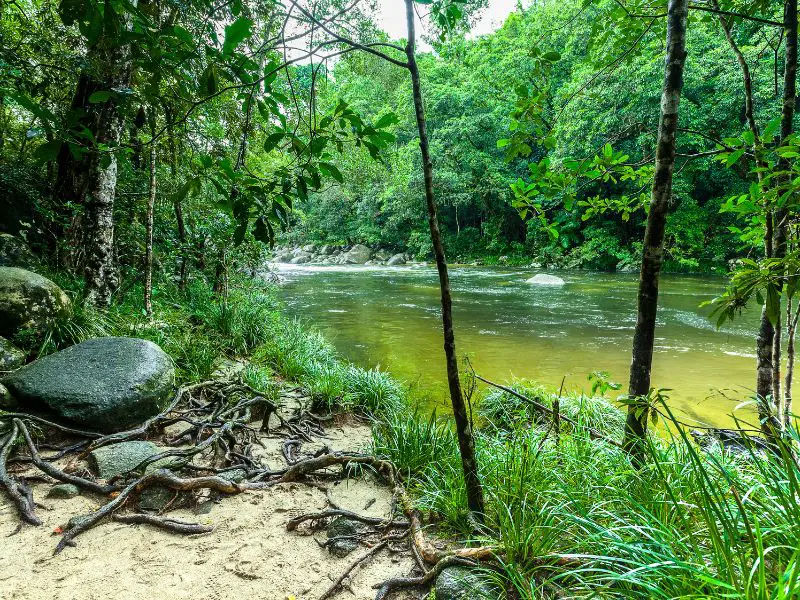
Did you know? The Daintree Rainforest and the Great Barrier Reef are World Heritage Sites, but they are the only ones in the world that may be found next to one another. Not only can you find the Daintree Rainforest inland, but it also has an entrance next to the Great Barrier Reef.
6. Sundaland Rainforest
The Sundaland rainforest is one of the largest rainforests in the world, covering around 197,000 square miles (510,000 square kilometers). The Malay Peninsula, located on the continent of Southeast Asia, and the islands of Sumatra, Java, and Borneo, are all part of the rainforest. Several countries, including Indonesia, Malaysia, Brunei, Thailand, and Singapore, are included in its scope.
The Sundaland rainforest is also home to the endangered Comodo dragon.
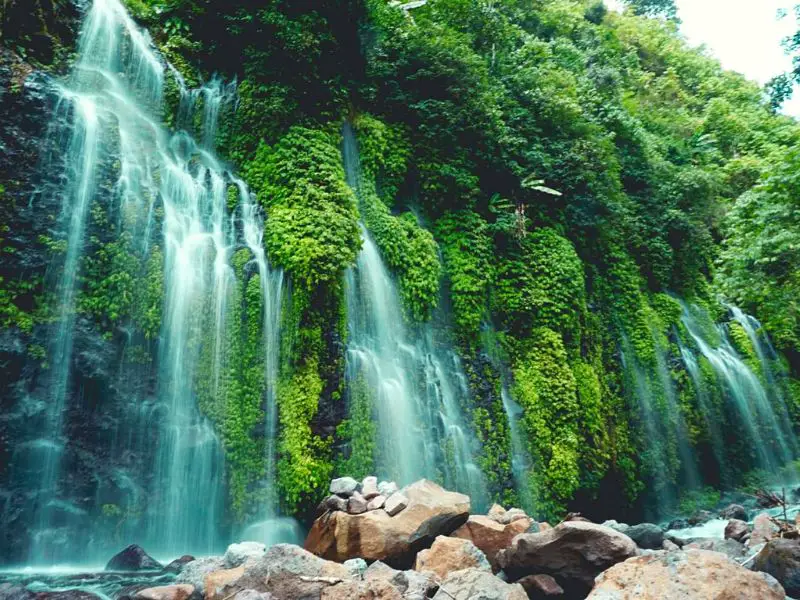
7. Bosawas Biosphere Reserve
Bosawas Biosphere Reserve is a UNESCO World Heritage site located in Nicaragua. It covers an area of around 8500 square miles. About 13 percent of the known species on Earth live in this reserve, comprising six different types of forest. The forest is also home to 20 other Indigenous communities. These people help protect natural resources and make a living from the land.
Did you know that Bosawas is where the animals of North and South America meet? It is home to a vast number of both vertebrate and invertebrate organisms species.
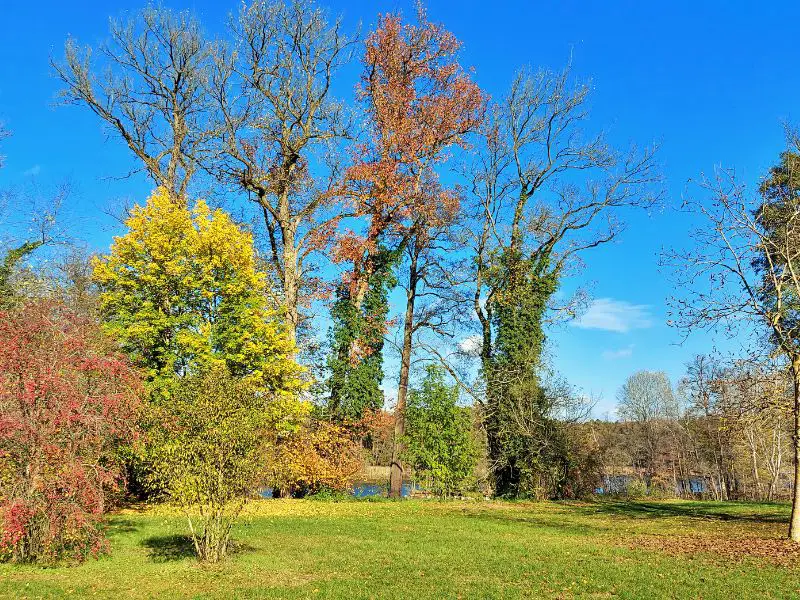
8. Xishuangbanna Tropical Rainforest, China
The tropical rainforest of Xishuangbanna is in the province of Yunnan in the southern part of China. It has been a UNESCO biosphere reserve since 1990.
The forest is about 936 square miles big and is home to many rare and endangered species, including 90 percent of China’s wild Asian elephants.
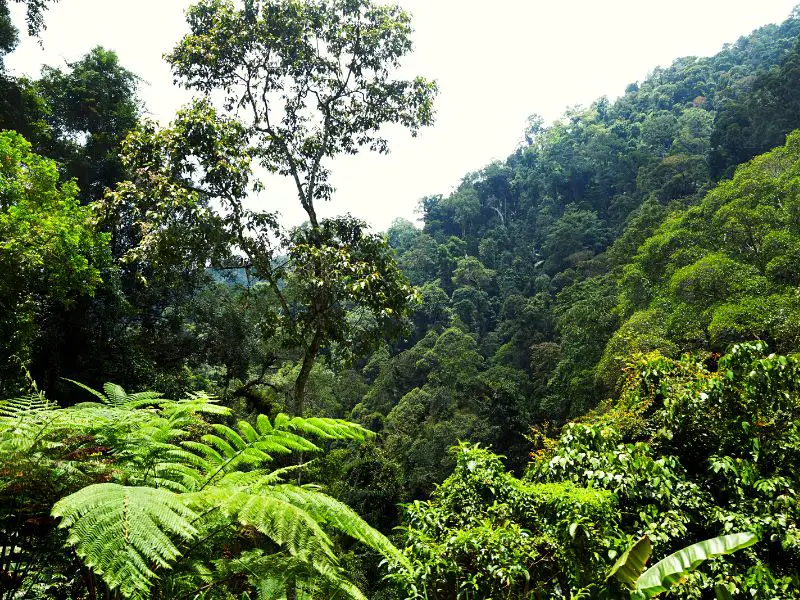
9. Santa Elena Cloud Forest Reserve, Costa Rica
This woodland is located in the Costa Rican reserve along the Cordillera de Tilaran in the provinces of Alajuela and Puntarenas. It spans around 26,000 acres of cloud forest. It is also called the “terrain of the cloud.” Almost every tree in the forest is covered with a rich garden of mosses, flowers, ferns, and epiphytes.
Did you know that the Santa Elena Cloud Forest is one of those unusual places that makes you feel as though you’ve unearthed a hidden treasure? Due to the dense canopy of this cloud forest, it is difficult for the untrained eye to notice most animals when traveling the pathways.
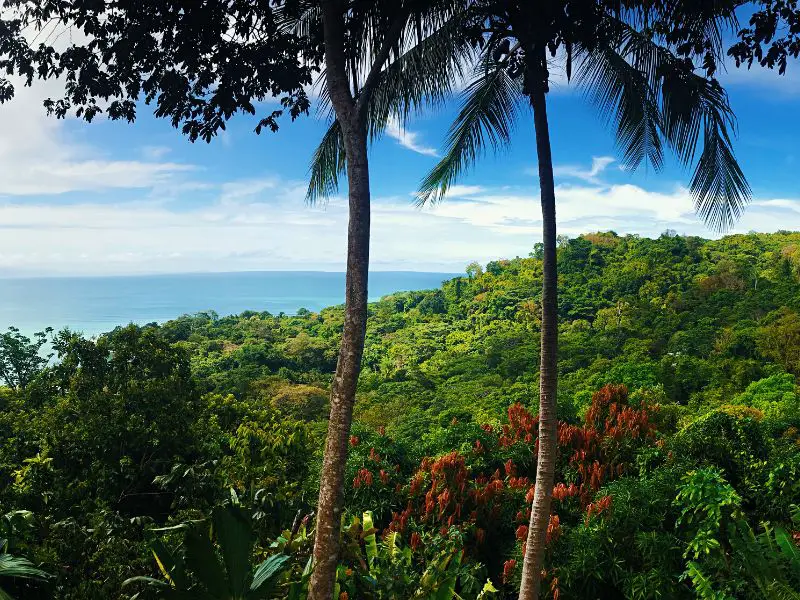
10. Sinharaja Forest Reserve, Sri Lanka
The Sinharaja forest is about 8,864 square kilometers in size. The forest of Sri Lanka is home to over 830 indigenous species of plants, insects, birds, reptiles, mammals, and amphibians.
The forest is in UNESCO World Heritage Site due to its many rare species and beautiful landscapes.
Did you know? The Sinharaja Forest Reserve is the world’s largest contiguous block of tropical rainforest. It is also one of the most biologically diverse areas in Asia.
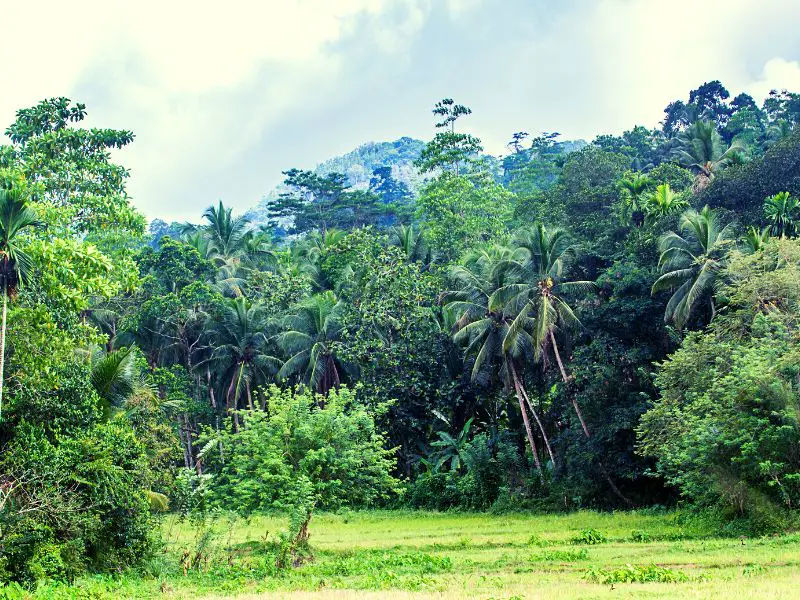
11. Monteverde Cloud Forest Reserve
Monteverde spans over 10,500 hectares in Costa Rica. Most of the land is covered by tropical green vegetation, including almost 2,500 plant species, 120 amphibian and reptile species, hundreds of insects, 400 bird species, and 100 different animals.
Did you know? The forest is known as “the virgin forest” because of its abundant natural resources, including rivers, medicinal plants, streams, and waterfalls.
Author’s Note
From rainforests to temperate zones, these forests are all beautiful in their own way. They are home to various species of plants, fungi, insects, and animals. The wonder of nature is a great reminder that we need to protect these forests so that we can keep enjoying our planet’s beauty.
You are sure to enjoy these articles that will make you live green and appreciate nature more, whether you are in or out of the house.

2 thoughts on “11 Largest Forests in the World and What You Can Learn From Them”